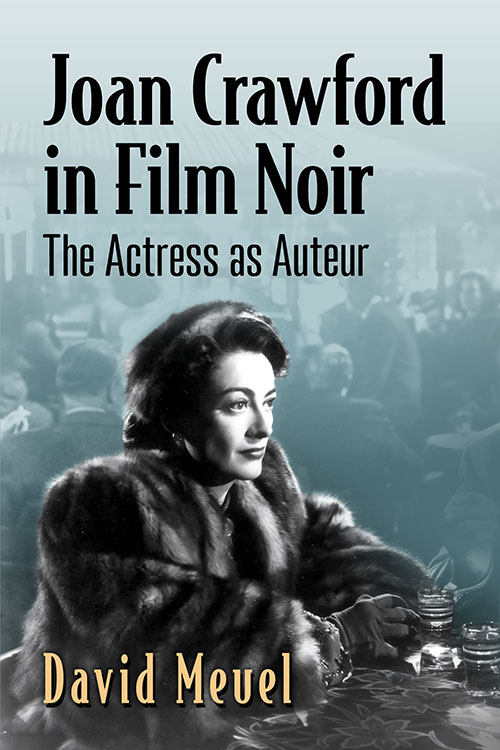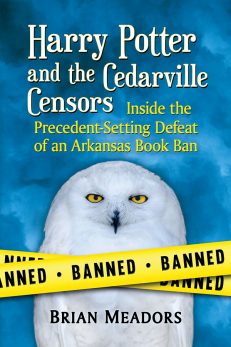Joan Crawford in Film Noir
The Actress as Auteur
$39.95
In stock
About the Book
Joan Crawford’s contribution to film noir during the 1940s and 1950s, though rarely discussed in its totality, is one of her most impressive and far-reaching career achievements. Several of her noir and noir-tinged efforts contain arguably her best acting work, and all bear her personal stamp. These aren’t conventional film noirs, they are Joan Crawford noirs: highly distinctive films that extended the boundaries of noir content and brought added depth and dimension to the noir style. Unlike most actors who routinely adapted to the needs of particular film projects and directors, she approached each film, first and foremost, as a Joan Crawford vehicle, often exerting great control over multiple production functions and at times operating as a de facto producer.
Examining these films as a collective and relatively cohesive body of work, this book highlights what Crawford aspired to achieve in her art, how—when the circumstances were right—she could deliver superb results, how she helped expand the possibilities for noir, and why the best of her efforts speak across the decades with such intensity and authority.
About the Author(s)
Bibliographic Details
David Meuel
Format: softcover (6 x 9)
Pages: 225
Bibliographic Info: 29 photos, notes, bibliography, index
Copyright Date: 2024
pISBN: 978-1-4766-9147-3
eISBN: 978-1-4766-5252-8
Imprint: McFarland
Table of Contents
Acknowledgments vi
Author’s Note ix
Preface 1
Introduction: From Cinderella to Cinema’s Dark Art 5
1. “The world belongs to the devil”: A Woman’s Face (1941) 23
2. “I love you, Mother, really I do. But let’s not be sticky about it”: Mildred Pierce (1945) 38
3. “You might be sorry love was ever invented, Paul”: Humoresque (1946) 60
4. “I don’t know what’s wrong. I don’t know why I am this way”: Possessed (1947) 75
5. “I love you, too, I guess”: Daisy Kenyon (1947) 90
6. “You just wouldn’t believe how much trouble it is to dispose of a dead elephant”: Flamingo Road (1949) 104
7. “You gotta kick and punch and belt your way up, ’cause nobody’s gonna to give you a lift”: The Damned Don’t Cry (1950) 117
8. “I’m sure your life is going to be much brighter from now on”: This Woman Is Dangerous (1952) 130
9. “Lester, I have a gun”: Sudden Fear (1952) 139
10. “Aren’t I wicked?”: Female on the Beach and Queen Bee (Both 1955) 156
11. “Your filthy souls are too evil for Hell itself”: Autumn Leaves (1956) 166
12. “If you don’t give me a divorce, we’ll kill you”: Television Noirs “The Road to Edinburgh” (1954) and “Strange Witness” (1958) 181
Conclusion: Aftermath and Appreciation 195
Chapter Notes 199
Bibliography 207
Index 211
Book Reviews & Awards
• “This focused study will interest readers looking for a deep dive into this specific era of Crawford’s career or surveys of the ways classic Hollywood films mingling noir and melodrama depicted women.”—Library Journal
• “Well structured, clearly written … a scholarly critical evaluation of Crawford’s work and place in Hollywood history”—Booklist






